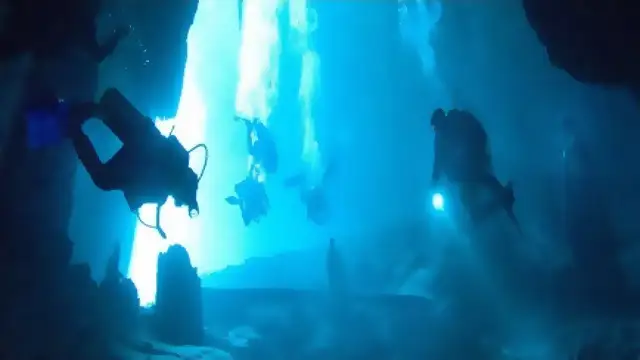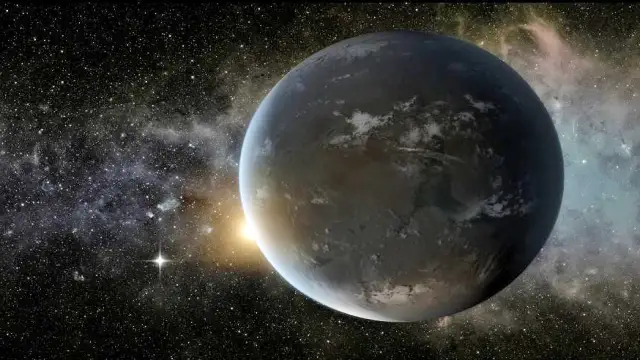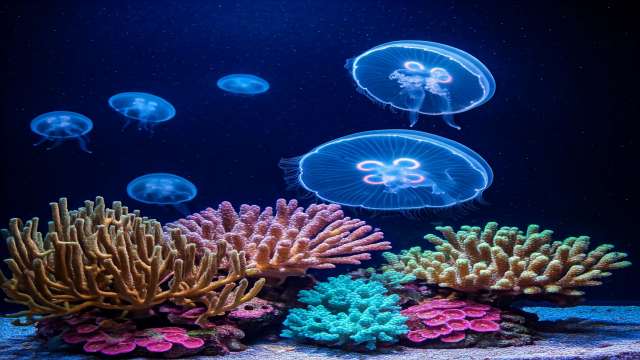Groundbreaking findings from NASA’s Cassini mission reveal Enceladus, a moon of Saturn, possesses key ingredients for life. Hydrogen cyanide discovery opens new chapters in the search for habitable environments beyond Earth. Explore the exciting implications of this cosmic revelation.
Key points
Table of contents
- NASA Unveils Game-Changer
- Enceladus: A Potential Haven for Life
- Chemical Energy Surprises: Oceans of Enceladus as Potential Fuel Reservoirs
- Methanogenesis and the Origin of Life
- Future Implications: Redefining Our Quest for Alien Life
- NASA’s Cassini Probe Unearths Intriguing Signs of Life on Saturn’s Moon, Titan”
NASA Unveils Game-Changer
In a leap toward unraveling the mysteries of our solar system, NASA scientists, led by a team of researchers using data from the Cassini mission, have unearthed compelling evidence suggesting that Saturn’s moon, Enceladus, may harbor the essential ingredients for life. The groundbreaking study, published in the Nature Astronomy journal, unveils a pivotal discovery—evidence of hydrogen cyanide, a key molecule in the formation of amino acids, on Enceladus.
Enceladus: A Potential Haven for Life
The study, with Harvard University doctoral student Jonah Peter as the lead author, signifies a significant stride in our understanding of extraterrestrial habitability. The confirmation of hydrogen cyanide’s presence on Enceladus implies that the moon fulfills the fundamental requirements for sustaining life. Amino acids, considered life’s building blocks, form the basis for the creation of more complex biomolecules.
Peter expressed the significance of the findings, stating, “Our work provides further evidence that Enceladus is host to some of the most important molecules for both creating the building blocks of life and for sustaining that life through metabolic reactions.” Enceladus, with its subsurface ocean, presents a promising environment for the potential emergence of life.
Chemical Energy Surprises: Oceans of Enceladus as Potential Fuel Reservoirs
The revelations extend beyond the presence of hydrogen cyanide. Researchers also uncovered the possibility of more chemical energy in Enceladus’s oceans than previously believed. This newfound energy source could serve as fuel for living organisms, presenting an exciting prospect for potential life on the moon.
Kevin Hand, co-author of the study and principal investigator at NASA’s Jet Propulsion Laboratory, drew a compelling analogy to convey the potential energy reservoir, stating, “If methanogenesis is like a small watch battery, in terms of energy, then our results suggest the ocean of Enceladus might offer something more akin to a car battery, capable of providing a large amount of energy to any life that might be present.” The analogy hints at the abundance of chemical energy that could support the existence of life in Enceladus’s subsurface ocean.
Methanogenesis and the Origin of Life
The recent findings build upon a 2017 discovery, where evidence of methanogenesis—a process generating methane—was identified in Enceladus’s plume of ice grains and water. Methane, a critical element in the origin of life on Earth, adds a layer of complexity to the potential habitability of Enceladus.
Researchers propose that the moon’s ocean holds the potential to provide a substantial amount of energy, surpassing previous estimates. This enhanced understanding of Enceladus’s chemical energy landscape fuels the speculation of a conducive environment for life, marking a pivotal moment in the search for extraterrestrial habitats.
Future Implications: Redefining Our Quest for Alien Life
The implications of these findings extend far beyond Enceladus. The discovery of key life-forming molecules and abundant chemical energy redefines our approach to the search for life beyond Earth. Enceladus emerges as a potential haven for the emergence and sustenance of life, prompting scientists to contemplate the broader implications for astrobiology.
As we stand on the precipice of interstellar exploration, the prospect of habitable environments on moons within our own solar system opens doors to new possibilities. Enceladus, once considered an icy celestial body, now beckons us to delve deeper into the cosmic symphony of potential life beyond our home planet. The quest for extraterrestrial life takes a monumental leap, inviting humanity to envision the unimaginable in the vast expanse of our celestial neighborhood.
NASA’s Cassini Probe Unearths Intriguing Signs of Life on Saturn’s Moon, Titan”
In a scientific revelation that could reshape our understanding of the cosmos, researchers at NASA’s space agency have uncovered compelling evidence suggesting the presence of primitive aliens on Titan, Saturn’s largest moon. Data meticulously analyzed from NASA’s Cassini probe points to complex chemistry on Titan’s surface, where, against all expectations, signs of potential extraterrestrial life have emerged.
Breathing and Feeding: Titan’s Alien Dynamics
Titan, distinguished as the only moon around Saturn with a dense atmosphere, has long intrigued astronomers. Despite its chilly conditions, scientists have unearthed clues indicating that life forms may be actively interacting with the moon’s environment. The groundbreaking research is detailed in two separate studies, each shedding light on the mysterious activities occurring on Titan.
The first study, published in the journal Icarus, reveals a fascinating disappearance of hydrogen gas in Titan’s atmosphere as it reaches the surface. This unexpected phenomenon led researchers to speculate that primitive alien life forms on Titan might be breathing hydrogen, akin to how life on Earth depends on oxygen.
The second study, featured in the Journal of Geophysical Research, emphasizes the absence of a specific chemical on Titan’s surface—acetylene gas. Scientists initially anticipated its presence due to sunlight interacting with atmospheric chemicals. The absence of acetylene gas prompted a bold hypothesis: life forms on Titan could be consuming this chemical, suggesting a potential feeding mechanism.
Hydrogen Consumption: A Key Indicator
Chris McKay, an astrobiologist at NASA Ames Research Centre, Moffett Field, California, who spearheaded the research, expressed the significance of the findings. “We suggested hydrogen consumption because it’s the obvious gas for life to consume on Titan, similar to the way we consume oxygen on Earth,” McKay stated. The prospect of extraterrestrial life relying on hydrogen as a vital component sparks excitement, potentially representing a form of life independent from Earth’s water-based life.
Professor John Zarnecki of the Open University emphasized the chemistry required for life to form on Titan, indicating that heat and warmth could kick-start the process. He added, “In four billion years’ time, when the Sun swells into a red giant, it could be paradise on Titan.” While acknowledging alternative explanations for the findings, researchers argue that the combined evidence strongly suggests conditions suitable for methane-based life to exist.
Implications for Astrobiology and Beyond
The discovery on Titan challenges preconceptions about habitability, introducing the possibility that life may thrive in unexpected environments beyond Earth. The tantalizing prospect of breathing and feeding mechanisms indicates a potential ecosystem on Titan that operates differently from our own, marking a historic milestone in astrobiology.
As scientists continue to unravel the mysteries of Saturn’s moon, Titan, the implications of these findings extend far beyond our solar system. The quest for extraterrestrial life gains momentum, opening new avenues for exploration and understanding the diverse possibilities of life in the vast expanse of the universe.
While the researchers acknowledge the need for caution and further exploration, the allure of alien breath and unconventional feeding habits on Titan sparks imagination and fuels the ongoing pursuit of unraveling the enigma of life beyond our home planet. The cosmic dance of potential life on Saturn’s moon beckons humanity to contemplate the broader canvas of existence in the cosmos.
























